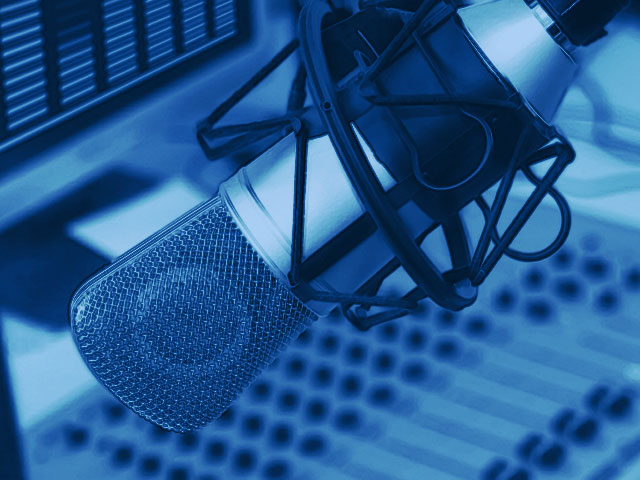- Published Aug 16, 2013 in Gear Garage
Voice Actor Dave Courvoisier covers the basics of setting up your own private voice-over studio.
Individual voice actors today are inclined to build, acquire, take-over, piece-together, or otherwise improvise a home or private studio.
If you were to poll 100 different voice actors, you would see 100 different set-ups, spanning the spectrum from bare-minimum to elaborate. Regardless, the studio is almost always a work in progress, and takes its form based on the following general factors:
- budget
- software/hardware competence
- willingness and comfort in dealing with technical issues
- available physical space in the home or office
- desired product output
- personal preferences
Many are the analogies employed to describe how far a voice actor should go to equip and configure a private studio. The Cadillac/Chevy analogy is perhaps the most frequently cited. Both will get you from Point-A to Point-B in similar fashion, but the Cadillac has certain accoutrements that make the ride more pleasant and offers a little more panache to your image.
You can even offer a Lexus/Yugo analogy but either way, you need to also take into account all the Buicks, Toyotas, and Volkswagens along the way. In other words, there is no right or wrong way to equip or arrange a studio, as long as the combination of elements in the audio chain produce a quality sound that is returning something on the investment - in other words, it's getting you work.
Getting the right fit.
In it's most basic form, the studio has to complement the talent, and meet the minimum of requirements for a quality sound that will attract clients. The best-equipped studio will not make up for a substandard talent effort. To that end, a voice-actor with accomplished abilities, a workable computer having an adequate sound-card, and good vocal technique could probably equip a studio with $300-$500 and do reasonably well in the marketplace.
Most voice actors today balance their performing talents with their technical know-how. Some excel at both...but most find they lean more one way than the other, and have to work at the lesser-developed attribute to compensate. Those who tend to be more "geek" tend to acquire an ever-wide-ranging array of hardware and software in the search for a better sound. Those less comfortable with technical issues usually seek advice in finding a hardware/software configuration that works, then move on to other aspects of their business.
Today's voice acting private studio has the following basic elements.
- A Windows or Mac-based computer (Digital Audio Workstation) equipped with an adequate sound-card.
- A decent computer monitor.
- A good internet connection (preferably broadband)
- Accompanying software that allows for recording, editing, and outputting the standard formats of soundfiles accepted today (.mp3, .wav, .aiff., etc)
- A microphone
- Some form of soundproofing or sound-dampening material
- Playback speakers or headphones
- All the necessary cables, cords, and plugs
- A location to put all the above in
The last item deserves to be unpacked a bit....but will be the focus of a future article. Most voice actors would aspire to a sound-booth, a closet, or some other space that can be enclosed. However, most distracting ambient sound can be managed by all sorts of improvised contrivances; from Aunt Gladys' quilt to manufactured, insulated, desk-top enclosures for the microphone only.
As far as the microphone...this too, will be the subject of a future article in itself. Briefly, though; accepted wisdom is that a $1600 Neumann will not necessarily make you sound better if it doesn't fit the timbre and range of your voice well. Many are the top nationally-voiced spots that have come out of studios with a $100 MXL microphone.
The audio gear.
Now, let's throw into the mix what many voice actors would also consider necessary equipment for a decent audio product- namely a preamp and/or a compressor/expander/gate. These electronic wonders allow for further, live manipulation of the sound from the microphone before the signal is recorded on the DAW... adding punch, depth, and presence. Prices on any of the units can range from$100 to $7000 or above. Some voice actors particularly adept at handling today's complicated recording software choose to add this manipulation of the sound file, digitally, AFTER it's recorded.
One more expectation of a nicely-equipped private studio now, is the real-time, high-quality audio connection direct from the DAW. Today's easily available broadband connections make this possible in the form of a moderately-priced connection through Source Elements, called "Source-Connect". Well-established production studios are beginning to add Source Connect to their tool chest, but the jury is still out on whether it compares to the old standard: ISDN, and ISDN (Integrated Services Digital Network) is the topic of my next article, coming out soon.
Increasingly, established or up 'n coming voice actors are seeing the wisdom of creating their own recording environment close to, or in the place where they live and work. How it's designed, constructed, and equipped is where individual creativity comes in.

